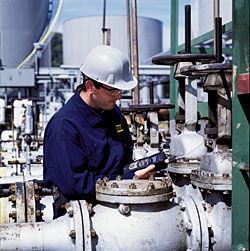Recording Gas Exposure with Today's Gas Monitors
Monitors with features that easily would cost thousands of dollars several years ago are now readily available for hundreds of dollars.
- By Dave D. Wagner
- Sep 01, 2006
 WE live and work in the 21st century--the age of information and the Internet. The prevalence of data and the desire to obtain more information, and get it faster, consume our personal as well as our professional lives. We attend seminars, study papers, and read trade journals, all in the interest of gaining that small knowledge detail in hopes it will allow us to overcome just one of the problems we face on a daily basis.
WE live and work in the 21st century--the age of information and the Internet. The prevalence of data and the desire to obtain more information, and get it faster, consume our personal as well as our professional lives. We attend seminars, study papers, and read trade journals, all in the interest of gaining that small knowledge detail in hopes it will allow us to overcome just one of the problems we face on a daily basis.
Today's industrial hygiene professional copes with a myriad of issues. Ergonomics, gas and vapor exposure, heat stress, indoor air quality, and the environment are just a sampling of the topics that industrial hygienists delve into every day. Add to all of these the current need to understand the aspects of chemical and bioterrorism issues, and the requirements for good data and accurate information have grown tremendously.
In at least one area, gas and vapor detection, the number of hygienists and safety officers actually acquiring, accumulating, and using the data and information available to them seems surprisingly slim. Historically, only 10 percent of the portable gas-monitoring instruments sold in the industrial marketplace contain data recording capability. In the vast majority of cases, the instruments that are passed out to workers to protect them from potential atmospheric hazards on a daily basis are used only to provide an immediate safety blanket. A worker can become ill--or, worse, fatally injured--and there is no evidentiary data available to prove or disprove the circumstances of the incident. While the role this type of equipment plays is unquestionably vital to everyday worker safety, the ability of these instruments to provide information leading to a better understanding of workplace conditions and offer potential solutions to long-term problems is seemingly underutilized. Why?
In the past, adding datalogging capability to a portable gas monitor meant an additional cost of between $200 and $500. Adding to that costs associated with the time and inconvenience of retrieving data from a multitude of instruments makes datalogging an expensive proposition. Storing reams of data was cumbersome at best, and analyzing it to extract what information is truly relevant seemed an impossible task.
But today is not only the age of information; it is the age of convenience, as well. From the way we get our daily spending cash, and further, eliminating the need to carry it the first place, everything is more convenient and, in many cases, less costly. The same is true for gas-monitoring instrumentation.
Data At the Ready
The vast majority of portable monitoring instruments available today contain datalogging capability. Not only do they have the functions built in as standard features, but also they have the ability to record more information on many more hazards. Four-, five-, and six-gas monitors are not only prevalent; they are the rule of thumb. All are available at bargain prices.
Monitors with features that easily would cost in the thousands of dollars several years ago are now readily available for hundreds of dollars from a variety of suppliers. They are smaller, lighter, faster, and provide more valuable information than ever before. They have the ability to cut right to the chase. Features such as event logging and continuous data recording loops separate trivial data from vitally important and useful information. Instrument capabilities for automatically tagging records with specific user identification and site location validate the information by tying the gas reading data to whom and where it applies. This functionality provides industrial hygiene and safety personnel with opportunities to obtain information that can be used for critical problem-solving analysis today and maintained to limit potential liability in the future. Won't it be great when this data can be collected, monitored, and stored in real time?
Not only is this type of information easier and more available to record, it is much more convenient to recover and retain. The days of connecting each monitor individually to a PC to download the day's worth of data are gone. Instrument docking products are available that allow multiple instruments to have several days of data recovered at predetermined times. All you really need to do is dock them and walk away having your data stored and secured for future reference, available at your fingertips if and when you need it.
Someone said that "curiosity killed the cat." With the capabilities, convenience, and data available to safety professionals from today's portable monitoring instruments, there is no reason that gas hazards or the curiosity of them should kill him today.
This article appeared in the September 2006 issue of Occupational Health & Safety.
]
This article originally appeared in the September 2006 issue of Occupational Health & Safety.